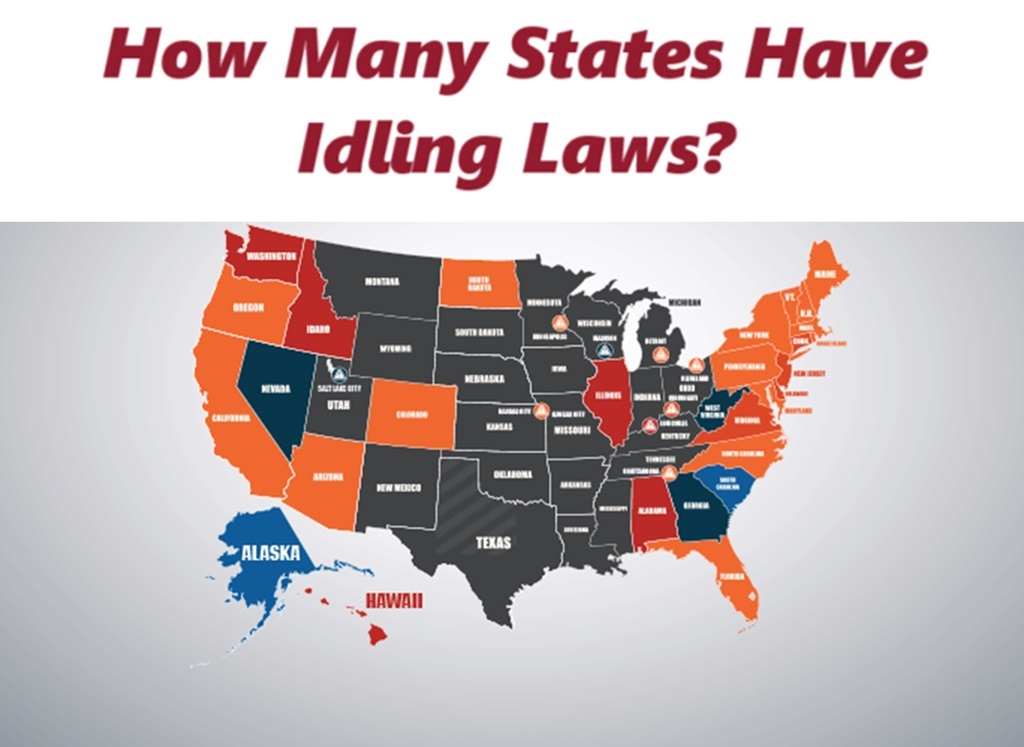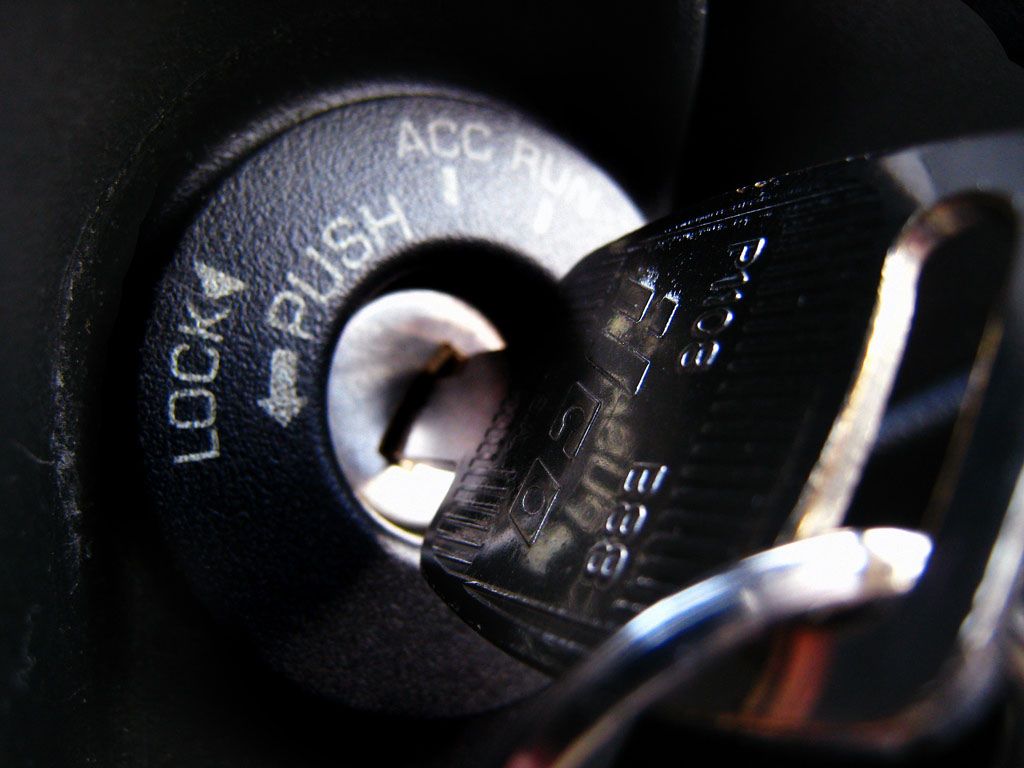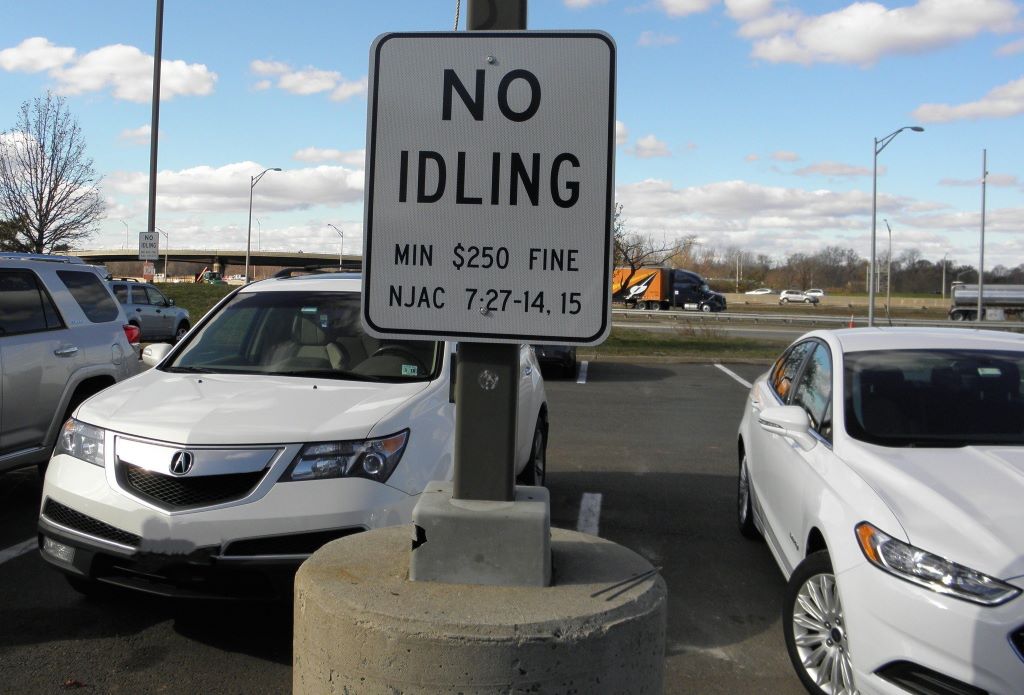
27 Jan How Many States Have Idling Laws?
Idling your vehicle’s engine when not driving seems harmless enough. You may do it while waiting to pick up your kids from school, sitting in a drive-thru line, or when you’ve arrived early for an appointment. But did you know that unnecessary idling is illegal in many parts of the United States?
I was curious about these laws myself, so I decided to do some digging on idling regulations in each state. What I discovered is that while not universal, a significant number of states do have laws restricting non-essential idling. Let’s take a closer look at how many states have idling laws and what they entail.
Why Do States Restrict Idling?

Before we get into the specifics of idling laws, it helps to understand why so many states have put these sorts of restrictions in place. While idling may seem harmless, research has shown it can have negative consequences, including:
- Increased air pollution: Idling produces harmful emissions including nitrogen oxide, volatile organic compounds, carbon monoxide and particulate matter. These can contribute to smog and exacerbate health conditions like asthma.
- Higher fuel consumption: An idling vehicle burns fuel but goes nowhere, wasting gas and money. According to the EPA, idling for more than 10 seconds uses more fuel than turning off and restarting your engine.
- Engine wear and tear: Frequent idling can increase engine wear as oil isn’t circulated as well versus when driving. This leads to higher maintenance costs down the road.
- Noise pollution: The constant hum of an idling engine can disturb neighbors, especially late at night or early in the morning.
- Contribution to climate change: Idling emits greenhouse gases which contribute to global warming.
Many states and municipalities realized these issues associated with excessive idling and decided to pass laws restricting when drivers can leave their engines running. The overarching intent is to reduce air pollution, conserve fuel, decrease noise, and promote public health.
Which States Have Enacted Laws Against Idling?
Currently, laws regulating the idling of vehicle engines exist in at least 30 U.S. states. Additionally, hundreds of cities and municipalities have local restrictions. The exact regulations vary, but usually include:
- Time limits (e.g. 5 minutes) for non-essential idling
- What constitutes essential vs. non-essential idling
- Exemptions for certain vehicles like emergency response
- Fines for violations
Let’s look at some examples of statewide idling laws:
California
California has had idling laws on the books for decades. Under the state airborne toxics control measure, passenger vehicles and trucks under 10,000 lbs are limited to idling for no more than 5 minutes. Heavier trucks can idle for up to 15 minutes.
There are exemptions for traffic conditions, queuing, and operating a sleeper berth. Violations are punishable by fines up to $1000. Many California cities have additional restrictions.
Massachusetts
Since 2002, Massachusetts law prohibits unnecessary idling for longer than 5 minutes across the entire state. Fines up to $100 can be issued for passenger vehicle violations.
Exempted are hybrid/electric vehicles, public safety vehicles, and idling in traffic. Cities like Boston and Cambridge have further limitations.
New Jersey
New Jersey’s idling statute caps nonessential idling at 3 minutes for both diesel and gasoline-powered vehicles. School buses have a 15 minute idling limit when picking up or discharging students.
Fines range from $100-$1250 depending on how many previous offenses a driver has accrued. Emergency vehicles and traffic conditions are exempt.
New York
New York has had statewide idling restrictions since the 1970s. Currently, most vehicles are limited to idling no more than 5 minutes in any 60 minute period. Heavy-duty vehicles allow 15 minutes.
School buses can idle while loading and unloading students but no more than 30 minutes total per day. Violations can incur fines of $375-$1500 depending on past offenses.
Utah
Utah law restricts most vehicles to an idling maximum of 2 minutes. Violations are infractions with fines up to $100. Exemptions apply for traffic, maintenance/diagnostic activities, and certain extreme weather conditions.
Many municipalities including Salt Lake City, Park City, and Moab have more stringent limits of 1 minute or less.
This is just a small sample of statewide idling regulations. While details vary, the most common maximum idle time is 3-5 minutes for passenger vehicles and 10-15 minutes for heavy-duty diesel trucks. And again, hundreds of cities and towns across the U.S. have local laws further restricting idling.
Recent Trends in Idling Laws
In recent years, we’ve seen growing awareness of the problems around unnecessary idling. More and more states are joining the ranks of those with firm idle reduction laws:
- Broader geographic adoption: Historically idling laws were concentrated in New England, the Mid-Atlantic, and West Coast. Now we’re seeing more momentum in the Midwest, Mountain West and South with states like Utah, Colorado, Tennessee and Florida.
- Shorter time limits: Many areas are reducing the maximum permitted idling times, especially for passenger cars. Some municipalities like Aspen and Boulder, Colorado have decreased limits to just 20-30 seconds.
- Expanded vehicle coverage: Newer laws are broadening what types of vehicles are subject to idling limits instead of focusing just on heavy-duty trucks. Passenger cars, buses, vans and light-duty trucks are now commonly included.
- Higher penalties: To increase compliance, fines for idling infractions are becoming steeper. California doubled fines to $1000 in 2019. Expect more states to follow suit.
- More exemptions for electric vehicles: As EVs gain popularity, idling laws are carving out exceptions for battery-powered cars that produce no exhaust. This will incentivize adoption of zero-emission vehicles.
So in summary, idling control is a trend gaining momentum across the United States. Drivers in all states may one day be subject to enforced idle reduction policies.
Which States Have No Statewide Idling Laws?

Given the widespread adoption of anti-idling laws in so many areas, which states still lack overarching idle reduction regulations? There are currently around 20 states with no statewide limits on idling. These include:
- Alabama
- Alaska
- Arizona
- Hawaii
- Idaho
- Iowa
- Kansas
- Kentucky
- Louisiana
- Minnesota
- Mississippi
- Missouri
- Montana
- Nebraska
- Nevada
- North Dakota
- Oklahoma
- South Carolina
- South Dakota
- Wyoming
However, this doesn’t mean you can idle with impunity in these areas. Many cities, counties and municipalities in these states do have local ordinances around idling. For example, Anchorage and Juneau in Alaska restrict idling to 5 minutes even though no statewide law exists. Still, these states have room for improvement by implementing idling standards across the board.
The Bottom Line
Unnecessary idling of vehicle engines contributes to air pollution, excess fuel consumption and noise disturbance. Recognizing these detrimental impacts, over 30 U.S. states have laws limiting non-essential idling to 3-15 minutes depending on the vehicle type. Hundreds of cities also have anti-idling policies.
Recent years have seen expanded geographic coverage of idling laws, shorter time limits, higher fines for violations and broader vehicle inclusion. While around 20 states lack statewide regulations, local ordinances may still apply.
The trend is clearly toward less tolerance of excessive idling across America. So next time you’re tempted to leave your car running parked for convenience, reconsider. Abiding by idling laws protects public health and the environment while also saving money on gas. A few extra seconds turning your engine off can make a real difference!
Frequently Asked Questions
How can I report a vehicle violating idling laws?
Most areas with anti-idling laws allow citizens to report violations by calling the local non-emergency police number. Some cities also have hotlines or apps specifically for reporting idling vehicles.
Are idling laws enforced and violators actually fined?
Enforcement varies by location but fines are commonly issued especially in areas like New York and California with strong idling reduction records. Many other places issue warning tickets before imposing fines.
Do idling laws also apply to hybrid / electric vehicles?
Traditional hybrids do produce emissions when idling so most idling laws do restrict them. However, many exempt all-electric vehicles as their idling has no environmental impact.
Can truckers idle while resting in their long-haul trucks?
Most states exempt sleeping berth idling as required by federal trucking regulations. But limits still apply when not resting, like waiting for loading/unloading.
Don’t engines need idling to warm up properly?
Modern engines only require idling for 30 seconds to a minute even in cold weather. Anything beyond this provides little benefit and is covered by warm-up exemptions in the laws.
In summary
A significant number of U.S. states now have laws limiting unnecessary idling of vehicle engines. These regulations intend to cut down on air pollution, conserve fuel, reduce noise and promote public health. While recent years have seen expanded geographic coverage and tighter limits on idling times, it’s also important to note that the duration of Lemon Laws, protecting consumers from defective vehicles, varies by state, reflecting a trend towards greater automotive accountability across America.


No Comments